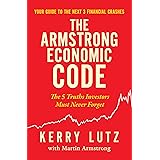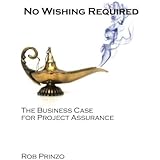As highlighted by CNBC contributor Tim Seymour in the accompanying video, the operational leverage inherent in gold mining companies presents an extraordinary investment opportunity right now. This isn’t merely a fleeting trend; it’s a fundamental characteristic that allows these firms to significantly amplify returns as the price of gold advances, a powerful dynamic often underestimated by the broader analyst community.
For discerning investors navigating the complex landscape of commodity markets, understanding this leverage is paramount. It suggests a strategic advantage for those who choose to allocate capital to the mining sector over direct metal holdings. The conversation with Tim Seymour offers a compelling perspective, urging us to look beyond the immediate macro environment of gold and focus on the robust underlying fundamentals of these industrial behemoths.
Unlocking Value: The Potent Force of Operational Leverage in Gold Mining Companies
Operational leverage acts as a powerful amplifier within the mining sector. Consider it like a finely tuned engine: once initial fixed costs—such as exploration, mine development, and equipment—are covered, each additional ounce of gold extracted and sold at a higher price dramatically boosts profitability. This is precisely why Tim Seymour points to gold mining companies as a superior play to the physical metal itself.
A prime example of this strategic maneuvering is Newmont, which commands a significant 13-14% weighting in the prominent GDX gold miners index. Newmont has actively engaged in divesting non-core assets, consolidating its operational focus, and bolstering its cash reserves. Such actions culminated in a substantial $6 billion share buyback authorized in July, a clear signal of confidence in their future earnings potential and a direct mechanism to return value to shareholders. This proactive financial engineering, coupled with the inherent leverage, positions them to outperform even if gold prices simply hold steady.
The lagging analyst community, as Seymour observes, often struggles to adjust EPS (earnings per share) targets quickly enough. They are often playing catch-up, much like a shadow trying to keep pace with a rapidly accelerating car. If gold prices merely go sideways from here, or even experience a modest 10% pullback, the enhanced profitability due to operational leverage suggests that actual EPS figures for 2026 will likely be far more robust than current consensus estimates. This divergence creates a potent opportunity for astute investors.
Gold Miners Versus the Metal: A Strategic Bet on Magnified Returns
The historical narrative often suggests that gold miners lag during periods of significant inflation, as their input costs rise. However, the current cycle tells a different story. In the initial phases of the recent gold rally, this dynamic was indeed evident; mining costs, fueled by inflationary pressures, eroded margins and caused the stocks to underperform the metal. Yet, as the rally matured and operational efficiencies kicked in, the relationship flipped.
Today, we observe a phenomenon where the beta—a measure of a stock’s volatility in relation to the overall market or, in this case, its underlying commodity—for gold miners has skyrocketed. Over the last two to three months, this beta has been in the range of two to three times, meaning that for every 1% move in gold, the miners’ stocks have moved 2-3%. This magnified performance is akin to gearing up a bicycle for a steep climb; the same amount of effort yields a much greater upward trajectory. This amplified sensitivity makes gold mining equities a powerful, albeit more volatile, avenue for capital appreciation when compared to holding physical gold or gold ETFs.
Unpacking Gold’s Unconventional Rally and Macro Drivers
The recent surge in gold prices has indeed been “un-gold-like,” as Tim Seymour aptly describes it. Traditionally, gold’s movements are often inversely correlated with the U.S. dollar or driven by overt inflation fears and geopolitical uncertainty. However, the current rally has shown a life of its own, somewhat decoupled from these conventional metrics, creating a sense of unease among some market participants.
Beyond the classic drivers, a deeper dive reveals significant thematic undercurrents at play. One prominent factor is the behavior of global central banks, particularly those in emerging economies. China, for instance, has been steadily increasing its gold reserves, now at decade-highs, while simultaneously reducing its holdings of U.S. Treasuries. This strategic shift points to a broader de-dollarization trend and a desire for greater financial autonomy, positioning gold as a preferred reserve asset. This is not simply about inflation; it’s about systemic rebalancing and geopolitical hedges against global instability, offering a robust, long-term demand floor for the metal.
Moreover, the market seems to possess an almost reflexive tendency to interpret any macro headline as a bullish signal for gold. Whether it’s rising inflation, economic slowdowns, geopolitical flare-ups, or even robust economic growth (which can spur luxury demand), analysts and pundits find a way to connect it to gold’s appeal. While this can create a somewhat noisy and sometimes irrational market, it underscores gold’s unique role as a perceived safe haven and store of value across a spectrum of economic conditions.
Beyond Gold: The Allure of Industrial Metals and Integrated Miners
While gold and gold mining companies offer compelling investment theses, the broader metals market presents additional avenues for diversification and growth. Copper, often dubbed “Dr. Copper” for its perceived ability to diagnose global economic health, has exhibited extraordinary volatility, influenced by the technical intricacies of the London Metal Exchange (LME) and futures contract dynamics. However, stripping away this short-term noise reveals a powerful long-term trend line, mirroring the three-year rally seen in gold.
The fundamentals driving copper are distinct: strong supply-demand dynamics, primarily fueled by global electrification, renewable energy infrastructure, and the growing demand for electric vehicles. The long lead times required to bring new mines online, coupled with increasing geopolitical instability in key mining regions, frequently lead to supply disruptions. These factors create an environment ripe for sustained price appreciation. Similarly, other industrial metals like aluminum and platinum are also showing signs of life, driven by their own unique supply-demand equations within the industrial ecosystem.
For investors seeking exposure to this broader industrial metals space, integrated miners like BHP and Rio Tinto represent excellent plays. These multinational giants extract a diverse portfolio of commodities, including iron ore, copper, and bauxite (for aluminum), making them less reliant on a single commodity’s price fluctuations. Tim Seymour also notes Freeport, a significant copper producer, as another intriguing option despite its recent disappointing performance, suggesting it could be a value pick-up. A resurgence in China’s economy, even a modest uptick, would translate into a substantial increase in demand for these foundational metals, providing a powerful tailwind for these integrated mining companies. These entities embody a different kind of operational leverage, where vast, diversified operations benefit immensely from even incremental improvements in global economic activity.











